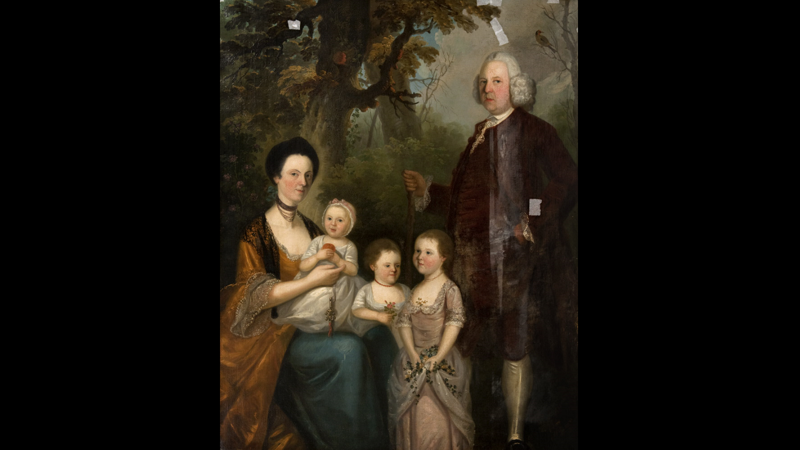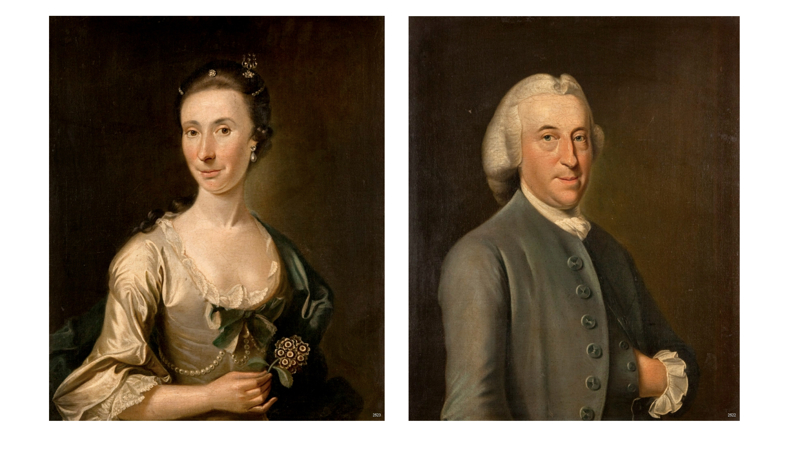Glasgow Museums collections have many more portrait paintings from this period representing merchant families such as the Bogles of Daldowie, Lukes of Claythorn, Connells, Campbells or individuals including Lord Provost Andrew Cochrane. However, only the Connell (2609 and 2610), Glassford and McCall portraits show families, and married couples. Like the wedding portraits of John and Anne Glassford, the artist of the Connells and George and Mary McCall was probably Robert Harvie.
Leaving the attribution of artists to one side, other important considerations to bear in mind is that this family portrait is in itself a rarity presenting an important person in Glasgow and Scottish history. John McCall was tobacco merchant, industrialist and banker who worked in partnerships with others of that ilk, including Glassford at the Thistle Bank from 1761. The McCall’s house, known as the Black House, was on the north east corner of Queen Street and Argyle Street, and as a part of Glasgow’s Georgian New Town. McCall was also a neighbour of John Glassford, William Cunninghame and other prominent tobacco and sugar merchants. He is, by that measure, physically and financially linked with the city’s institutional investments with transatlantic chattel slavery.
Dr Anthony Lewis,
Curator of Scottish History


